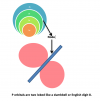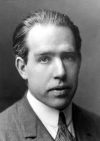You can practice MCQ on Stoichiometric relationships questions carefully created to cover the topic and subtopics of this unit.
Q. Which of the following is not a Pure substance?
A. Water
B. Iron
C. Milk
D. Oxygen gas
Q. Which of the following is an element?
A. Steel
B. CO
C. Ornamental Gold
D. Co
Q. Which element is not a semimetal?
A. Si
B. Ge
C. Sn
D. Sb
Q. What is the % of nitrogen in anhydrous ammonia?
A. 71
B. 10
C. 82
D. 25
Q. Which is not a mixture?
A. Pure milk
B. Water
C. Ornamental Gold
D. Air
Q. Salt is mixed in water to prepare _____ .
A. Compound
B. Heterogeneous mixture
C. Homogeneous mixture
D. Colloid
Q. Milk is not a solution. Which of the following is the correct reason?
A. Solute particles can be seen by necked eyes.
B. Solute particles are not dissolved equally throughout the solution.
C. No solute is present in pure milk.
D. Pure Milk does not have enough water.
Q. Which one is a colloid?
A. Salt water
B. Sugar water
C. Milk
D. Carbonated water
Q. Ethyne, C2H2 undergo combustion reaction as follows.
C2H2(g) + O2(g) → CO2(g) + H2O(g)
Which is the correct coefficient combination in a balanced equation?
| C2H2 | O2 | CO2 | H2O | |
| A | 1 | 2 | 2 | 1 |
| B | 2 | 5 | 4 | 1 |
| C | 1 | 3 | 2 | 2 |
| D | 2 | 5 | 4 | 2 |
Q. Which combination represent correct state symbols in the following equation
MgO + 2HCl → MgCl2 + H2O
| MgO | HCl | MgCl2 | H2O | |
| A | s | l | l | l |
| B | s | aq | s | l |
| C | s | aq | aq | aq |
| D | s | aq | aq | l |
Q. 1 mole is an amount of a substance which contains as many particles as there are in 12 g of C-12 isotopes? Which is the correct number of particles in one mole?
A. 6.022X1022
B. 6.022X1023
C. 6.022X10-23
D. 6.022X1034
Q. 1.0 g of potassium hydroxide, KOH will have …….. moles?
A. 0.010
B. 0.100
C. 0.0178
D. 1.0178
Q. Which is the correct relative molecular mass of Carbonic acid, H2CO3?
A. 61
B. 62
C. 83
D.81
Q. A compound has 44.09 % iron and rest chlorine. Its emp formula is ..
A. FeCl3
B. FeCl2
C. Fe2Cl
D. FeCL2
Q. 20 g Magnesium ribbon is burnt in air with white light. What mass of Magnesium oxide (MgO) formed in this reaction?
A. 80 g
B. 40 g
C. 33.3 g
D. 24 g
Q. What is limited reagent in a chemical reaction?
A. Amount of product
B. Amount of reactant
C. Amount of one of the reactant
D. None of the above
Q. 20 g Magnesium burns in 10 g of Oxygen to form Magnesium oxide. Which is correct combination of masses for the oxygen, magnesium and magnesium oxide in the reaction?
| Oxygen | Magnesium | Magnesium Oxide | |
| A | 32 g | 24 g | 80 g |
| B | 10 g | 20 g | 40 g |
| C | 10 g | 15 g | 25 g |
| D | 16 g | 24 g | 40 g |
Q. What is the correct combination of conditions for a gas to be an ideal gas?
| Conditions | Temperature K | Pressure KPa | Volume dm3 | Amount in mol |
| A | 298 | 1 | 27.2 | 1 |
| B | 298 | 100 | 24.7 | 1 |
| C | 273 | 100 | 27.2 | 1 |
| D | 273 | 100 | 22.7 | 1 |
Q. If 50 cm3 of 0.200 mol dm–3 HCl(aq) is used to completely neutralize 25.0 cm3 Mg(OH)2(aq). What was the volume of Mg(OH)2(aq)?
A. 12.5 cm3
B. 25.0 cm3
C. 50.0 cm3
D. 75.0 cm3
Q. Which represent the correct definition of empirical formula of a compound?
A. formula with the exact numbers of atoms present in a compound
B. formula with the simplest numbers of elements present in a compound
C. formula with the simplest ratio of atoms of each element in a compound
D. formula with the molar mass of a substance
You can look for MCQ on other topics.
You should buy and read this book on IB chemistry IA.


